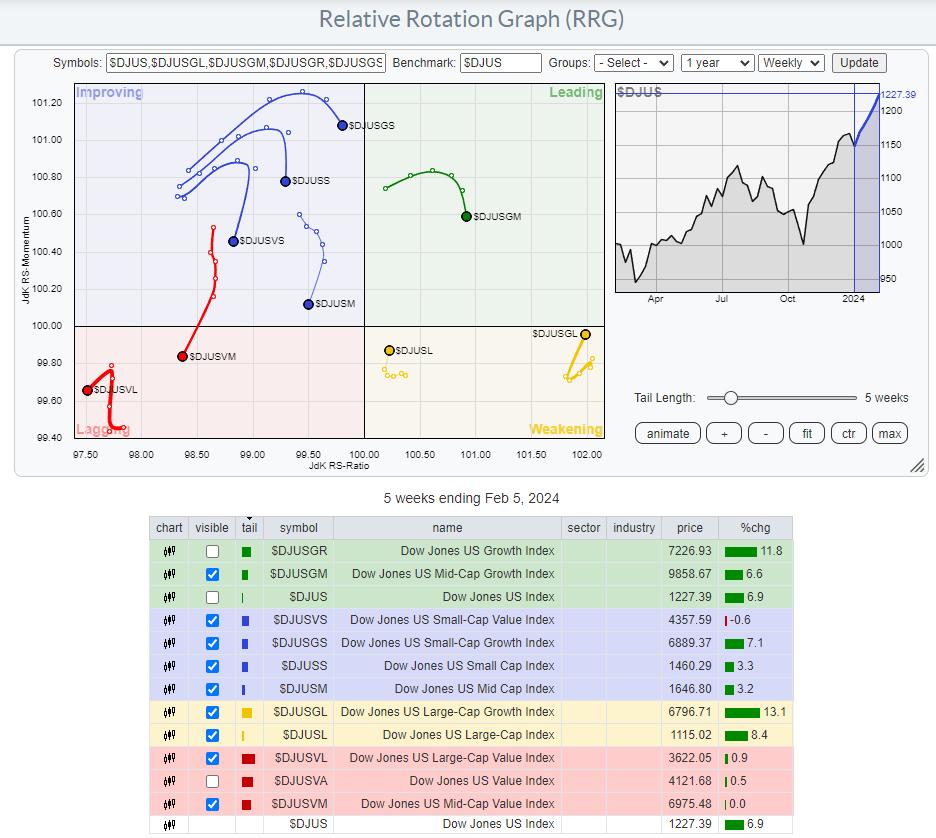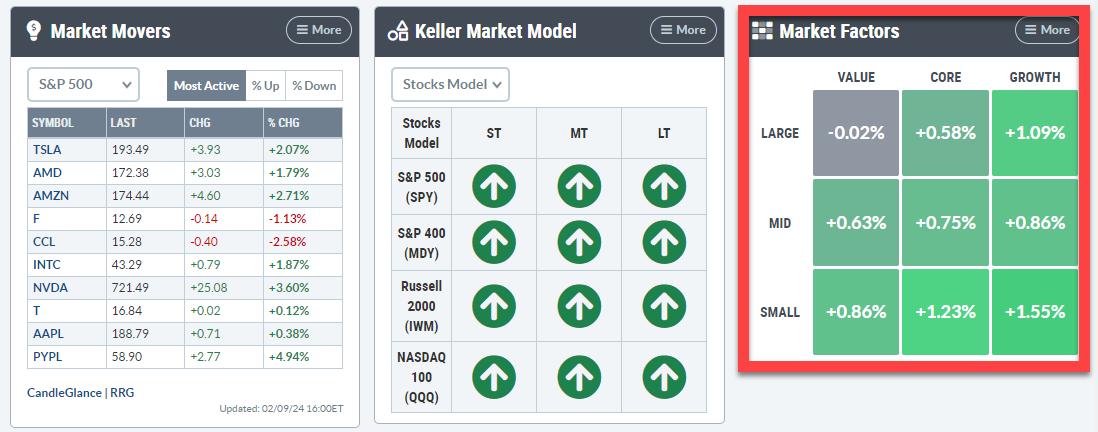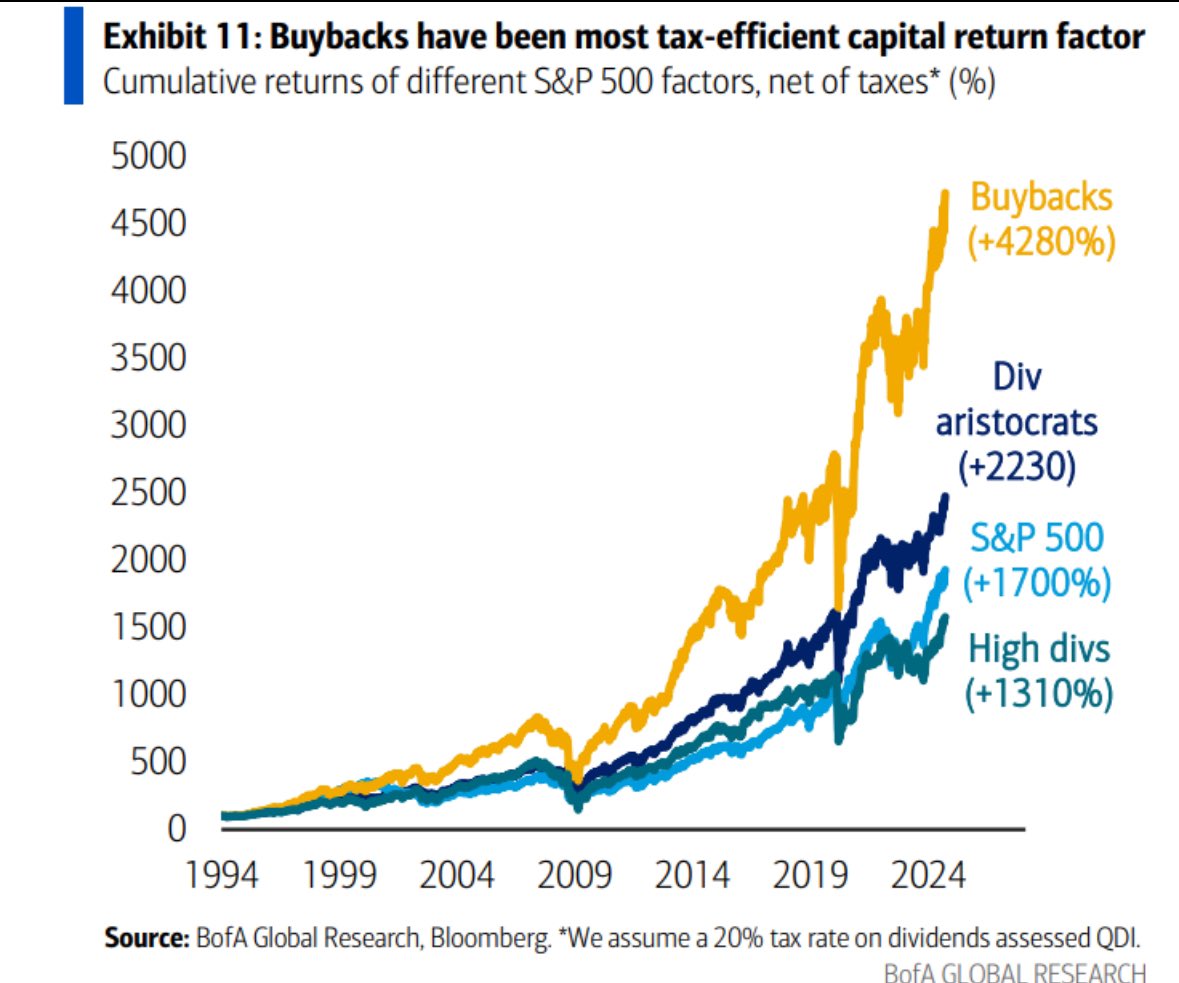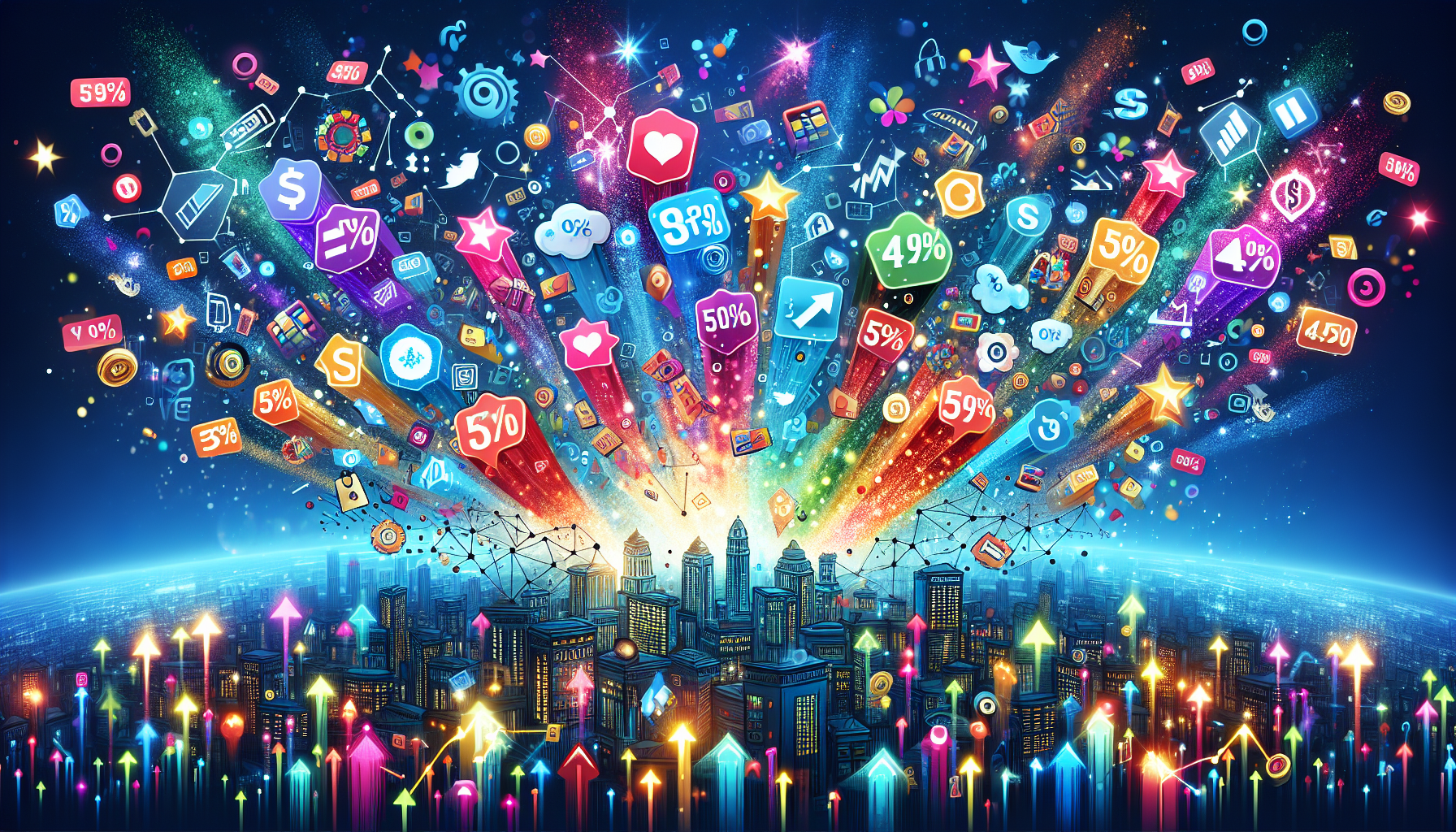KEY
TAKEAWAYS
- Bring the New Market Factors Panel to a Relative Rotation Graph
- Same approach using different index family shows a different image
With the release of the new Panels feature on the StockCharts dashboard, there are a lot of ways that users of RRG charts can take advantage! Let’s take a close look at one in particular.
Market Factors Panel
One of the most significant new panels available for users is the “Market Factors” panel.
This panel slices the S&P 1500 into nine segments broken down by size-value-growth. It is very similar to the one used in the RRG dropdown.

The only difference, and there is quite a distinct difference (as you will see), is that this panel uses S&P indices and only covers the S&P 1500 segments. Meaning the S&P 400, 500, and 600, along with its growth and value brothers and sisters.
Two Key RRGs
Here is the RRG from the pre-defined list.

As you can see, I have ticked off the US Growth and US Value indexes, as they cover the entire market (all size segments) and the DJ US index, the benchmark on this graph.
This is the RRG for the market factors using the same underlying ETFs as the Market Factors panel.

The RRG is linked (just click the image) to a live version on the site, which you can then save as a bookmark in your browser for later retrieval. I will also add this to the group of pre-defined universes.
The benchmark for this group is the S&P Composite 1500 index ($SPSUPX).
Same Approach, Different Images
Looking at these two RRGs, you can see that they are quite different from each other but, in the bigger picture, send a similar message.
The differences are primarily caused by the different universes. The DJ groups hold 153 stocks in the large-cap index, 314 in the mid-cap index, and 610 in the small-cap index. So, especially in the large- and mid-cap segments, the S&P groups are much broader, which can have significant effects on the behavior of the indexes.
I use these “Big Picture RRGs” from a very high level. This means I pay much more attention to the general rotations of the various tails vis-a-vis each other than to their exact locations on the RRG.
One observation that I found quite interesting on the Market Factors Panel RRG is the location of the cluster of SPYG, SPY, and SPYV.

What you can learn from this cluster of tails is their positioning on the RRG and the relative positioning among the three of them.
First of all, these are all S&P 500, so large-cap indices, and they are positioned to the right of the benchmark (S&P 1500) and thus in a relative uptrend. You can also see that inside the S&P 500 segment, growth is rapidly improving against value. The preference started to turn around some 5 weeks ago, when the growth and value tails started to curl.
Much like the DJ version, albeit in a different location on the RRG, what you also see is that the mid- and small-cap groups for both the growth and value segments have started to roll over, some of them already at a negative heading. The only group still at a positive heading is large-cap Growth, and maybe mid-cap growth, though the latter is debatable as this tail is still inside the improving quadrant, but on flat momentum at the lowest RS-Ratio reading in the universe.
This is something to ponder over the weekend, as it means that, once again, the foundation of the rally is getting narrower after an attempt of the mid- and small-cap groups to start participating. This attempt seems to fail, while the market continues to climb….. a “Wall of Worry?” Only time will tell, but I believe there is reason enough to get more cautious, and risk is increasing every day.
#StayAlert and have a great weekend. –Julius
Julius de Kempenaer
Senior Technical Analyst, StockCharts.com
Creator, Relative Rotation Graphs
Founder, RRG Research
Host of: Sector Spotlight
Please find my handles for social media channels under the Bio below.
Feedback, comments or questions are welcome at Juliusdk@stockcharts.com. I cannot promise to respond to each and every message, but I will certainly read them and, where reasonably possible, use the feedback and comments or answer questions.
To discuss RRG with me on S.C.A.N., tag me using the handle Julius_RRG.
RRG, Relative Rotation Graphs, JdK RS-Ratio, and JdK RS-Momentum are registered trademarks of RRG Research.

Julius de Kempenaer is the creator of Relative Rotation Graphs™. This unique method to visualize relative strength within a universe of securities was first launched on Bloomberg professional services terminals in January of 2011 and was released on StockCharts.com in July of 2014.
After graduating from the Dutch Royal Military Academy, Julius served in the Dutch Air Force in multiple officer ranks. He retired from the military as a captain in 1990 to enter the financial industry as a portfolio manager for Equity & Law (now part of AXA Investment Managers).
Learn More





